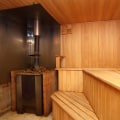Timber frame house construction is a method of building that has been utilized for centuries, showcasing the enduring appeal and reliability of wood as a primary structural material. This construction technique involves creating a home's frame from heavy timber, intricately joined and secured without the use of nails in the traditional sense. The timber frame serves as the skeleton of the home, supporting the entire structure and defining its spatial layout. This method is celebrated for its strength, durability, and the aesthetic beauty it lends to buildings, allowing for spaces that are both functional and visually stunning. The use of timber in construction is not only a nod to historical building practices but also reflects a modern desire for sustainable and eco-friendly building materials. Timber, being a renewable resource, offers a lower carbon footprint compared to many other construction materials, making timber frame construction a choice that aligns with environmental consciousness.
The process of building a timber frame house involves several key steps, beginning with the design phase, where architects and engineers plan the layout and structural requirements. The timber is then precisely cut and shaped, often using traditional techniques that have been passed down through generations, though modern advancements have also introduced new methods for cutting and assembling the frame with remarkable precision. Once the frame is erected on-site, it is typically enclosed with panels that provide insulation and weather protection, ensuring the home is comfortable and energy-efficient. The open, airy interiors that timber frame construction allows for are often seen as a canvas for homeowners and designers, offering vast possibilities for customization and personalization of the living space.
One of the most distinctive features of timber frame construction is the aesthetic it provides. The exposed wooden beams and posts become a part of the home's interior design, adding warmth, character, and a sense of natural beauty that is hard to replicate with other materials. This architectural feature can complement various interior styles, from rustic to contemporary, making it a versatile choice for homeowners.
In addition to the aesthetic and environmental benefits, timber frame construction is known for its longevity and resilience. The strength of the timber frame makes homes capable of withstanding harsh weather conditions, including heavy snow loads, strong winds, and even seismic activity, ensuring the safety and security of the inhabitants. Furthermore, the technique's efficiency in terms of construction time is another advantage. The prefabrication of the timber frame components can significantly reduce the building time on-site, allowing for quicker occupancy compared to traditional brick-and-mortar construction methods.
Integrating modern home features and utilities into a timber frame house is seamlessly achievable, combining the charm of timber with contemporary conveniences. For example, installations such as platinum garage doors in Sydney can easily be incorporated into the design, marrying the rustic appeal of timber with the sleek functionality of modern garage doors. This blend of old and new encapsulates the essence of timber frame construction in the modern era, offering homeowners the best of both worlds.



